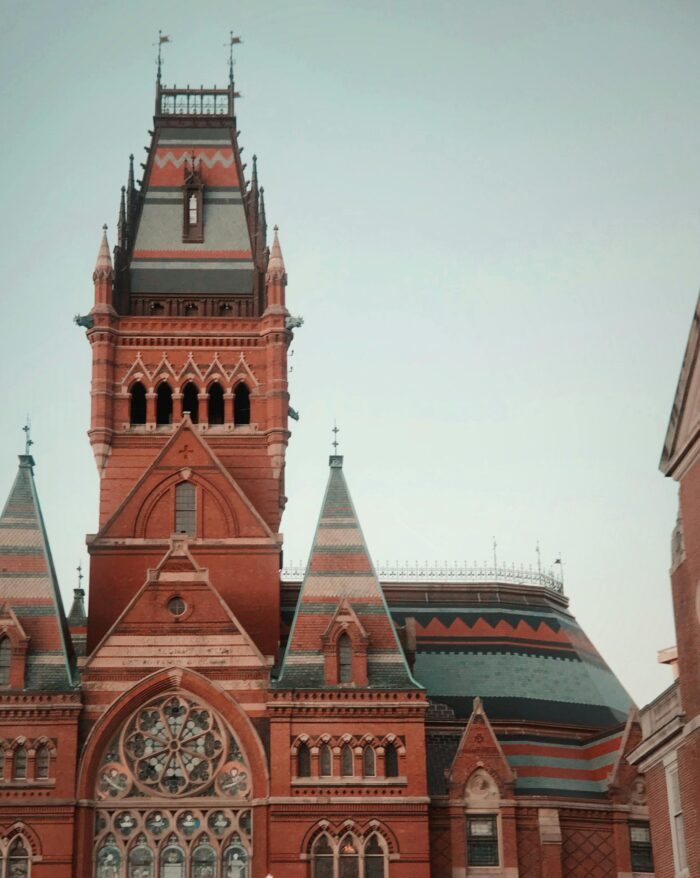The rivalry between Yale and Harvard extends beyond football fields and debate podiums—it’s a decision that shapes futures. You’re not just picking a campus; you’re choosing an ecosystem that will define your professional identity, social network, and intellectual trajectory for years to come.
For high-achieving students and professionals, this isn’t a casual toss-up between Ivy League equals. It’s a deeply strategic choice between two elite institutions with distinct cultures, strengths, and trade-offs. The glossy brochures won’t tell you everything. But by decoding what really matters—like how location shapes opportunity, what acceptance data hides, the nuances of daily student life, and how your degree performs decades down the line—you’ll get much closer to clarity.
This is not about winning cocktail party arguments. It’s about understanding the forces that will shape your career, your community, and your legacy. Let’s break down the decision the way we would with a client: focused, deliberate, and with your long-term success in mind.
Where Are They? What That Means for You
Yale’s home, New Haven, Connecticut, delivers the kind of insulated intensity some students crave. It’s a smaller city, yes—but that’s part of the draw. The compact campus and surrounding town create a cocoon of focus and familiarity. You’ll know your classmates, your professors, your coffee spot. There’s an intimacy to the experience that can be hard to replicate elsewhere. But this also means limited access to major industry hubs unless you’re prepared for a train ride or a strategic semester away.
Harvard, on the other hand, operates from the beating heart of Cambridge, Massachusetts, with Boston just across the river. This isn’t just about location—it’s about proximity to power. You’re embedded in one of the densest innovation ecosystems in the world. Think fintech startups in Kendall Square, biotech in Seaport, hedge funds down the street. Coffee chats become interviews, and your casual run-ins can quickly escalate to career-defining opportunities.
Here’s the strategic takeaway: location isn’t just a backdrop. It’s a force multiplier. Harvard’s urban setting gives you immediacy—internships, networking events, and industry mentors are minutes away. At Yale, you may need to be more intentional about building those connections, but the quieter setting can sharpen focus and deepen bonds. Which matters more to you: embedded access or deliberate immersion? Answer that, and you’re halfway to knowing which school aligns with how you want to grow.
Acceptance Rates and Enrollment: Who Gets In
Yale Acceptance Rate:
Yale College admitted 2,308 students to the Class of 2029 from a pool of 50,227 applicants, resulting in an acceptance rate of 4.59% . This marks a slight increase from the previous year’s record low of 3.7% .
Harvard Admission Rate:
Harvard University accepted 1,970 applicants for the Class of 2028 out of 54,008, yielding an acceptance rate of 3.6% . Over the past five years, Harvard’s acceptance rates have remained below 5%, reflecting a consistently high level of selectivity .
Selectivity vs. Strategy:
Both institutions exhibit extreme selectivity, with acceptance rates hovering around 4%. To stand out in such competitive pools, applicants must go beyond stellar academics. Crafting a compelling personal narrative, demonstrating authentic leadership, and articulating clear, ambitious goals aligned with the university’s values are crucial. Admissions committees seek candidates who not only excel academically but also show the potential to contribute meaningfully to the campus community and beyond.
Enrollment Sizes:
- Yale University: As of Fall 2024, Yale College enrolled approximately 6,740 undergraduate students . The university announced plans to increase undergraduate enrollment to 6,600 students over time, starting with the Class of 2029 . Graduate and professional schools at Yale enroll about 8,341 students, bringing the total student population to around 15,081 .
- Harvard University: Harvard College has an undergraduate enrollment of approximately 6,980 students . The total enrollment across all schools, including graduate and professional programs, is about 30,386 students .
Implications for Class Sizes and Campus Culture:
Yale’s smaller undergraduate population fosters a close-knit community with more intimate class sizes and personalized interactions with faculty. This environment can enhance mentorship opportunities and collaborative learning. Harvard’s larger student body offers a broader array of courses, research opportunities, and extracurricular activities, contributing to a diverse and dynamic campus culture. Prospective students should consider which environment aligns better with their learning preferences and personal growth objectives.
Academics and Strengths: Who Does What Best
Yale’s academic identity is deeply intertwined with its strengths in the humanities, law, and medicine. The Yale School of Medicine remains a powerhouse—particularly for students eyeing dual-degree paths or research-intensive tracks. Its flexible, student-directed curriculum makes it a magnet for driven applicants who thrive with autonomy. Similarly, Yale Law is consistently ranked among the top in the nation, drawing ambitious minds from across the world. And when it comes to the arts—drama, music, fine arts—Yale doesn’t just compete; it leads. Clients of ours with creative or interdisciplinary career goals often find Yale’s environment uniquely supportive of hybrid ambitions.
Harvard, meanwhile, flexes its muscle in government, economics, and business. Its Department of Economics has produced more Nobel laureates and global policymakers than most entire countries. The undergraduate social sciences curriculum is rigorous, unforgiving, and famously effective at sharpening analytical thinking. Government majors find themselves in arm’s reach of D.C. networks and global NGOs. And for students who see business school in their future, Harvard’s undergraduate-to-HBS pathway is legendary—though far from automatic. We’ve coached clients who’ve used Harvard’s undergraduate case-based courses and summer research assistantships to set themselves up for seamless transitions into elite MBA programs.
Here’s what separates the truly strategic applicant: not just choosing a school for its ranking, but leveraging the academic ecosystem to build a distinct personal brand. One Yale admit we worked with tied her background in biology to health policy through Yale’s unique Global Health Initiative. A Harvard-bound client drew a straight line from his economics coursework to public sector consulting via faculty research labs and internship pipelines.
In short, each school has its own intellectual DNA. Your job is to identify how your academic interests map onto that terrain—and then build your application to reflect not just interest, but intent.
Campus Culture and Student Life
Yale’s twelve residential colleges are more than just housing—they’re micro-communities with their own traditions, events, and rivalries. Think Harry Potter, but with dining halls and intramural ping-pong. This structure fosters tight-knit networks and a strong sense of identity from day one. Extracurricular life thrives within this framework, from acclaimed a cappella groups like the Whiffenpoofs to undergraduate-led journals and political unions. The overall vibe? Intellectually charged but low-ego—students here are serious about their work, but equally serious about community.
Harvard’s House system, while similar in principle, feels more decentralized. First-years live in the Yard, then transition to one of the twelve Houses. These Houses come with their own perks—faculty deans, tutors, unique events—but the social fabric is more porous. The upside: students often build cross-cutting communities through clubs, research, and city-based opportunities. Harvard’s 450+ student organizations span the spectrum from performing arts to venture capital incubators. The culture is high-octane, competitive, and deeply connected to real-world impact.
On the diversity front, both schools enroll a student body that is roughly 50% women and over 40% U.S. students of color. Resources for underrepresented and international students are robust—Yale’s Office of LGBTQ Resources and Harvard’s First-Generation Program are just two examples. Yet the culture of inclusion isn’t monolithic; students should investigate how each campus supports identity and belonging in practice.
So how do you signal cultural fit? Start by digging into each school’s student newspaper. Scan club rosters, read about recent campus events, and explore how alumni describe their experience. Then, in your application, speak their language—not just with facts, but with emotional intelligence. Demonstrate that you not only understand the culture—you’re ready to contribute to it.
The Cost of Prestige: Tuition, ROI, and Career Outcomes
For the 2025–2026 academic year, Yale’s total cost of attendance is estimated at $90,550, encompassing tuition, housing, and food. However, with robust financial aid programs, the average need-based scholarship for first-year students is approximately $71,577, significantly reducing the financial burden for many families.
Harvard’s total cost of attendance for the same period is comparable. Notably, Harvard has announced that starting in the 2025–2026 academic year, it will offer free tuition to all students from families earning $200,000 or less annually. Additionally, students from families earning less than $100,000 will have all costs covered, including tuition, housing, food, and other expenses.
Both institutions boast extensive alumni networks and strong career support services. Yale’s Office of Career Strategy provides resources like the Yale Career Link for job and internship opportunities, and the Cross Campus platform facilitates alumni-student connections. Harvard’s Mignone Center for Career Success offers similar services, with the Crimson Careers platform and a vast alumni network to assist students in their professional development.
When evaluating return on investment (ROI), both universities demonstrate strong outcomes. Graduates from Yale and Harvard often secure positions in top firms, pursue advanced degrees, or engage in impactful public service roles. The combination of generous financial aid and robust career support makes both institutions financially viable options for many students.
Ultimately, the decision between Yale and Harvard should consider not only the financial aspects but also the alignment with one’s academic interests, career goals, and preferred campus culture.
Final Verdict: Which One Is Better—for You?
Harvard delivers scale, access, and proximity to industry powerhouses. Yale offers intimacy, intellectual depth, and a more curated academic experience. Harvard’s culture leans ambitious, fast-paced, and network-oriented. Yale leans collaborative, reflective, and community-focused. One’s embedded in Boston’s innovation economy; the other creates its own ecosystem in New Haven. Both are fiercely selective, wildly well-resourced, and undeniably prestigious.
But this isn’t a decision about who “wins” the Ivy League arms race. It’s about fit. The best school for you is the one where your strengths can shine, your values align, and your vision for the future feels not just supported—but amplified.
That’s where we come in.
At MBA Exchange, we don’t just help clients get in—we help them get clear. Clear on what matters. Clear on how to frame their story. Clear on how to choose a school that aligns not just with who they are now, but who they’re becoming.
Ready to take the next step toward an Ivy League admit? Schedule a free consultation with MBA Exchange—because elite results require elite strategy.





